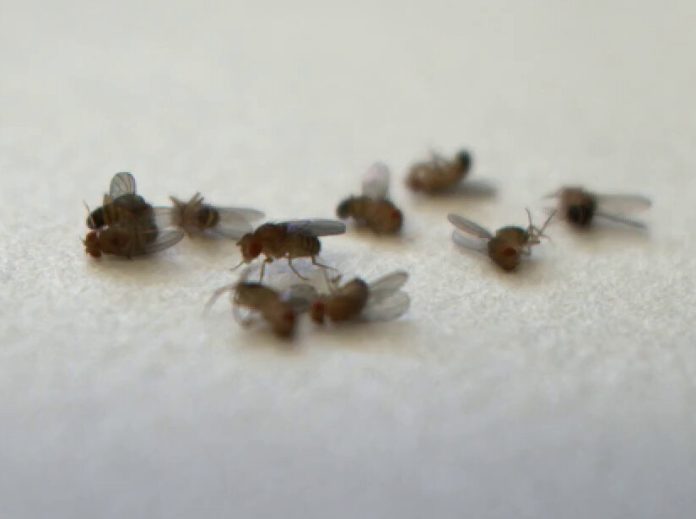
A team of researchers led by Christi Gendron at the University of Michigan has made a fascinating discovery about the connection between perception of death and accelerated aging in fruit flies.
Their recent study, published in the journal PLOS Biology, reveals that certain brain cells in flies become active when they encounter deceased flies, leading to faster aging.
Understanding the mechanisms behind aging and how it can be influenced by perception opens doors for potential treatments to slow down aging in humans.
Unveiling the Mystery of Aging: Aging is a complex process influenced by both genetic factors and the environment.
Although we know that our experiences can affect how we age, the specific mechanisms remain largely unknown. One intriguing example is the effect of “death perception” in fruit flies.
Previous research by the University of Michigan team demonstrated that when fruit flies see dead flies, their own aging process accelerates. This effect is dependent on a specific type of serotonin receptor.
In their recent study, the researchers delved deeper into the details of this process.
Insights from Fruit Fly Experiments: Through a series of experiments involving fruit flies, the researchers identified a particular group of neurons responsible for the aging effect.
By using fluorescent tagging, they observed increased activity in a region of the fly brain called the ellipsoid body when flies were exposed to dead counterparts.
Silencing various ring neurons within this region revealed that two types, namely R2 and R4 neurons, were essential for the effect. Further investigations confirmed that the key factor was the presence of the serotonin receptor 5-HT2A on these neurons.
To further validate their findings, the researchers artificially activated these neurons in fruit flies. Remarkably, the lifespan of these flies decreased, even in the absence of any real exposure to dead flies.
This highlights the crucial role of neural circuits, like the R2 and R4 neurons, in regulating the aging process. Understanding these mechanisms may eventually lead to targeted drug therapies in humans that can slow down aging.
Co-author Scott Pletcher emphasizes the significance of their research, stating, “We identified specific neurons and evolutionarily conserved molecules in the fly brain that help tune rates of aging in response to environmental conditions and experiences.”
This breakthrough opens up new avenues for investigating how our brains regulate the aging process.
Ultimately, this knowledge could potentially lead to innovative treatments that slow down aging in humans, improving overall health and quality of life.
Conclusion: In a surprising discovery, researchers have uncovered a connection between the perception of death and accelerated aging in fruit flies.
Specific brain cells in these flies, known as R2 and R4 neurons, become active when exposed to dead flies, leading to faster aging. This finding sheds light on the intricate mechanisms of aging and how perception can influence this process.
The implications of this research extend beyond fruit flies, as understanding neural circuits and their role in aging may eventually pave the way for targeted therapies to slow down aging in humans.



